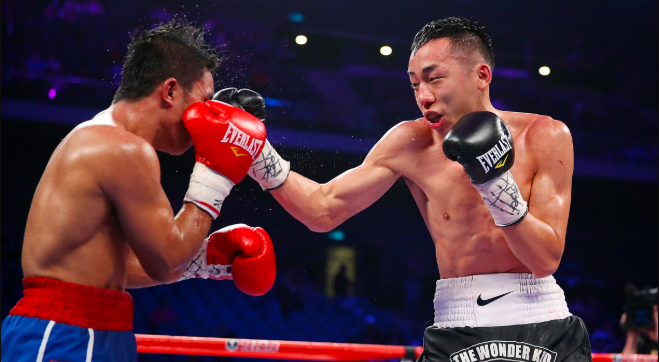Boxing Hong Kong: The Rise of a Combat Sport in Asia’s Global City

In the vibrant and fast-paced city of Hong Kong, where skyscrapers meet centuries-old temples and East blends seamlessly with West, a new kind of energy is pulsing through its streets—not from the stock exchange or harborfront, but from the boxing rings. Once a niche sport associated with underground gyms and imported culture, boxing in Hong Kong is now experiencing a renaissance. From grassroots programs to elite training centers, this combat sport is becoming a serious force in the city’s sports scene.
This article dives into the evolution, current landscape, and future of boxing hong kong and why it is quickly transforming into one of the city’s most popular and empowering sports.
The Roots of Boxing in Hong Kong
Hong Kong’s history with boxing dates back to the colonial era when British soldiers and expatriates brought Western-style boxing to the region. In the 1950s and 60s, it remained mostly underground, practiced by enthusiasts or in small-scale events. Local martial arts like Wing Chun and Kung Fu dominated the fight scene, often overshadowing boxing.
However, things began to change in the 2000s when global interest in combat sports surged, thanks in part to professional boxing promotions, the rise of Mixed Martial Arts (MMA), and Hollywood films glorifying the ring. With growing exposure to Western sports and greater international integration, the demand for boxing in Hong Kong began to grow rapidly.
See also: What is journal entry automation? A complete beginner’s guide
Modern Boxing Culture in Hong Kong
Today, boxing Hong Kong is no longer an afterthought. The city boasts a growing number of boxing gyms, fitness studios, and fight clubs catering to everyone from casual gym-goers to aspiring professionals. Boxing is now seen not only as a competitive sport but also as a lifestyle choice, a fitness regimen, and a form of mental discipline.
1. Fitness Trend and Boxing Gyms
A major driver of boxing’s popularity in Hong Kong is its health and fitness appeal. With urban professionals constantly seeking stress relief and physical conditioning, boxing offers the perfect outlet. Gyms across the city—from Central to Kowloon—now offer structured boxing fitness programs that emphasize cardio, strength, and agility without the need for full-contact sparring.
Popular boxing gyms like The Ring, DEF Boxing, and Lights Out offer a mix of personal training, group classes, and fight preparation sessions. These gyms are fully equipped with boxing rings, speed bags, heavy bags, and experienced coaches, many of whom are former national-level boxers or certified trainers.
2. Rise of Amateur and Professional Fighters
Hong Kong is also nurturing a rising generation of amateur and professional boxers. Local competitions organized by the Hong Kong Boxing Association (HKBA) provide a platform for talent development. These events have become a regular fixture for young athletes seeking to compete at regional or even international levels.
Moreover, fighters from Hong Kong are beginning to gain recognition abroad. Some have fought in major Asian tournaments, while others aim to qualify for events like the Olympics or professional circuits like ONE Championship and Matchroom Boxing.
Women in Boxing: Breaking Stereotypes
Another exciting trend in the boxing Hong Kong scene is the increasing participation of women. Traditionally viewed as a male-dominated sport, boxing in Hong Kong has made significant strides in becoming more inclusive. Today, women’s boxing classes are common, and many female fighters are making their mark.
From cardio-boxing sessions to full-contact sparring, women are embracing the sport for its fitness benefits, self-defense skills, and the empowering mindset it fosters. Several female coaches and fighters now serve as role models, helping to inspire the next generation of Hong Kong’s female boxers.
Challenges Facing Boxing in Hong Kong
Despite the progress, the boxing community in Hong Kong faces several challenges:
1. Limited Space and High Rent
Hong Kong’s real estate prices are among the highest in the world, making it difficult for boxing gyms to find affordable space. Many operate in small, shared facilities that limit training time and capacity.
2. Lack of Sponsorship and Funding
Compared to more mainstream sports like soccer or basketball, boxing receives minimal government funding or corporate sponsorship. This limits the resources available for athlete development and international representation.
3. Public Perception and Safety Concerns
While interest is growing, some still associate boxing with violence or injury, which can deter parents from encouraging their children to participate. Ongoing education about the safety protocols and health benefits of the sport is essential to shift this mindset.
Events and Competitions Boosting Popularity
Boxing tournaments and exhibitions are essential for promoting the sport and showcasing talent. Hong Kong regularly hosts amateur events, charity fights, and semi-professional bouts that draw crowds and media attention.
Events like “White Collar Boxing” have become particularly popular. These charity-based boxing matches feature non-professional fighters—often professionals from banking, tech, or education—who train for several weeks before entering the ring to raise funds for local causes. These events not only entertain but also elevate the profile of boxing in the public eye.
Conclusion
The story of boxing Hong Kong is one of transformation. From being a niche sport with limited visibility, it has become a thriving part of the city’s fitness and sports culture. With strong grassroots efforts, passionate trainers, rising local fighters, and growing female participation, boxing is carving out a significant space in the hearts of Hongkongers.
For those looking to explore a powerful way to stay fit, learn self-discipline, or test their physical limits, boxing offers more than just a workout—it offers a way of life. And in a city as dynamic as Hong Kong, this fighting spirit feels right at home.




